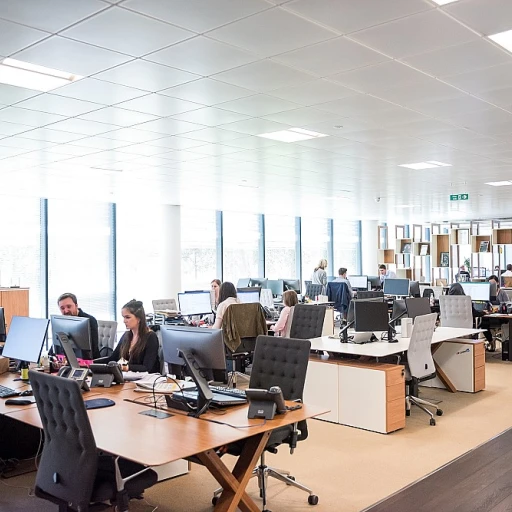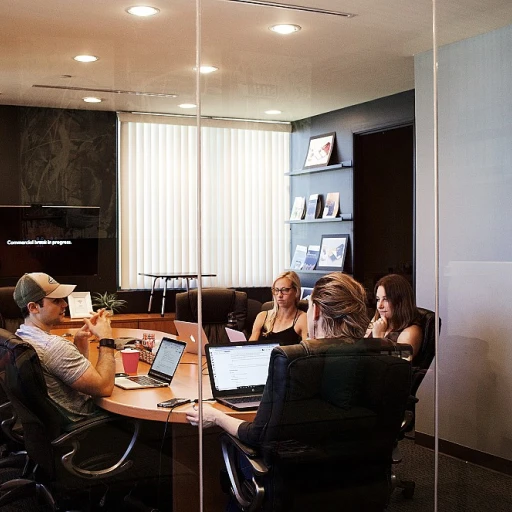Understanding the Dynamics of Indian Workplaces
Decoding the Indian Work Culture
In the dynamic landscape of Indian workplaces, understanding the unique dynamics is crucial for thriving in high-stress, fast-paced environments. The Indian work culture is often characterized by a blend of traditional values and modern practices, creating a distinctive environment that demands adaptability and resilience from employees.
Indian companies often operate in a high-pressure environment where time management and efficiency are key. The rapid pace of work can lead to increased stress levels, making it essential for employees to develop effective stress management techniques. This is particularly important as the fast-paced nature of work requires quick decision-making and problem-solving skills.
The Role of Hierarchy and Team Dynamics
Hierarchy plays a significant role in Indian workplaces, influencing team dynamics and communication. Understanding these dynamics can help employees navigate the workplace more effectively, fostering better collaboration and support among team members. A supportive work culture is crucial for managing stress and enhancing employee engagement.
Team collaboration is vital in managing tasks efficiently in a high-pressure environment. Encouraging open communication and mutual support can help teams stay organized and perform better under stress. This collaborative approach not only aids in stress management but also contributes to a healthier work-life balance.
Balancing Tradition and Modernity
Indian companies are increasingly leveraging technology to boost efficiency and manage stress. However, balancing traditional practices with modern tools remains a challenge. Employees need to stay adaptable, integrating new technologies into their workflows while respecting established norms and practices.
By understanding these dynamics, employees can better manage stress and contribute positively to their work environments. This understanding lays the foundation for exploring effective stress management techniques and enhancing team collaboration in subsequent sections.
Identifying Stress Triggers
Pinpointing Stress Catalysts in the Workplace
In the fast-paced environments of Indian companies, understanding what triggers stress is crucial for effective management. Identifying these stressors helps employees and managers create strategies to mitigate their impact, enhancing overall productivity and mental health.
Common stress triggers in high-pressure work environments include:
- High Workload: The demand to complete multiple tasks within tight deadlines can overwhelm employees, leading to stress and burnout.
- Lack of Time Management: Ineffective time management can result in missed deadlines and increased pressure, affecting job performance and mental well-being.
- Unclear Job Roles: Ambiguity in job responsibilities can create confusion and anxiety among team members, hindering their ability to stay organized and focused.
- Poor Communication: Miscommunication or lack of communication within teams can lead to misunderstandings and conflicts, adding to the stress levels in the workplace.
- Inadequate Support Systems: A lack of support from management or colleagues can leave employees feeling isolated and overwhelmed, impacting their ability to manage stress effectively.
By recognizing these stress triggers, companies can implement targeted stress management strategies, such as enhancing team collaboration and leveraging technology for efficiency, to create a more supportive and productive work environment.
Effective Stress Management Techniques
Practical Strategies for Managing Stress
In a fast-paced work environment, stress management becomes essential to maintain mental health and ensure productivity. The dynamic nature of Indian workplaces often demands quick decision making and problem solving, which can elevate stress levels. Here are some effective strategies to help manage stress and stay organized:
- Time Management: Prioritizing tasks and setting realistic deadlines can significantly reduce stress. Utilize tools and techniques like to-do lists and digital calendars to keep track of tasks and manage time effectively.
- Mindfulness Practices: Incorporating mindfulness and relaxation techniques such as deep breathing, meditation, or yoga can help employees stay calm and focused, even in high-pressure situations.
- Regular Breaks: Taking short, regular breaks during work hours can prevent burnout and refresh the mind, enabling employees to return to their tasks with renewed energy and focus.
- Healthy Lifestyle Choices: Maintaining a balanced diet, getting enough sleep, and engaging in regular physical activity can enhance overall well-being and resilience to stress.
- Support Systems: Building a network of support within the team can foster a sense of community and provide an outlet for sharing concerns and seeking advice. Encouraging open communication can alleviate feelings of isolation and stress.
By implementing these strategies, employees can better manage stress and improve their performance in high-pressure environments. For more insights on effective management techniques, explore this comprehensive guide that delves into power project management strategies.
Enhancing Team Collaboration
Fostering Effective Team Dynamics
In a fast-paced work environment, team collaboration is crucial for achieving organizational goals. Effective teamwork not only helps in managing stress but also enhances productivity and employee engagement. Here are some strategies to improve team collaboration:
- Encourage Open Communication: Create a culture where employees feel comfortable sharing their ideas and concerns. This openness can reduce misunderstandings and foster a supportive work environment.
- Define Roles Clearly: Ensure that every team member understands their responsibilities. Clear role definitions help in managing tasks efficiently and prevent overlap, which can lead to high stress.
- Utilize Collaborative Tools: Leverage technology to facilitate communication and collaboration. Tools like project management software can help teams stay organized and manage time effectively.
- Promote Team Building Activities: Regular team-building exercises can strengthen relationships and improve problem-solving and decision-making skills, essential in high-pressure situations.
- Provide Support and Resources: Ensure that teams have the necessary resources and support to perform their jobs effectively. This includes access to training, mental health resources, and management support.
By focusing on these aspects, teams can thrive even in high-stress, fast-paced environments, ensuring that both the work and the employees' well-being are managed effectively.
Leveraging Technology for Efficiency
Utilizing Technology to Stay Organized
In today’s fast-paced work environments, leveraging technology is crucial for enhancing efficiency and managing stress. With the right tools, employees can streamline tasks, improve time management, and foster a collaborative work culture.
One of the primary benefits of technology in the workplace is its ability to help teams stay organized. Digital tools and platforms enable employees to manage tasks effectively, reducing the chaos that often accompanies high-pressure jobs. By using project management software, teams can track progress, set deadlines, and allocate resources efficiently, which significantly reduces stress levels.
Enhancing Employee Engagement with Tech Solutions
Technology also plays a vital role in boosting employee engagement. By providing platforms for communication and collaboration, employees can connect with their peers more easily, fostering a supportive work environment. This connectivity is crucial for maintaining mental health and managing stress in fast-paced environments.
Moreover, technology aids in decision-making and problem-solving by offering data-driven insights. Access to real-time information allows employees to make informed decisions quickly, which is essential in high-stress situations. This capability not only enhances productivity but also empowers employees to take ownership of their work, leading to increased job satisfaction.
Supporting Mental Health through Digital Solutions
Lastly, digital solutions can support mental health by offering resources for stress management. Apps and online platforms provide employees with access to mindfulness exercises, stress management techniques, and mental health support. These resources are invaluable in helping employees cope with the demands of a fast-paced work environment.
In conclusion, leveraging technology in the workplace is not just about improving efficiency; it’s about creating a supportive environment where employees can thrive. By integrating the right tools, companies can enhance team collaboration, boost employee engagement, and manage stress effectively.
Building a Supportive Work Culture
Creating a Culture of Support and Understanding
In high-stress, fast-paced work environments, fostering a supportive work culture is essential. Employees who feel supported are more likely to thrive, even when the pressure is on. Building this kind of environment requires intentional strategies and a commitment from leadership to prioritize employee well-being.
Encouraging Open Communication
Open communication is the cornerstone of a supportive workplace. Encourage team members to express their concerns and ideas without fear of retribution. Regular check-ins and feedback sessions can help employees feel heard and valued, which is crucial for maintaining mental health and job satisfaction.
Providing Resources for Stress Management
Offering resources for stress management can significantly impact employee engagement and productivity. Consider implementing workshops or providing access to mental health professionals. These resources can help employees develop effective stress management techniques, enabling them to manage their tasks more efficiently.
Promoting Work-Life Balance
A supportive work culture also respects the importance of work-life balance. Encourage employees to take breaks and use their vacation time. Flexible working arrangements can also help employees manage their time better, reducing stress and preventing burnout in high-pressure environments.
Recognizing and Rewarding Efforts
Recognition is a powerful tool in a fast-paced work environment. Regularly acknowledging the hard work and achievements of team members can boost morale and motivation. Whether through formal awards or informal shout-outs, recognizing efforts helps employees feel appreciated and supported.
Fostering Team Collaboration
As discussed earlier, enhancing team collaboration is vital. A supportive culture encourages teamwork and collective problem-solving, which can alleviate individual stress. By promoting a collaborative environment, employees can share the load and support each other in managing high-pressure situations.













